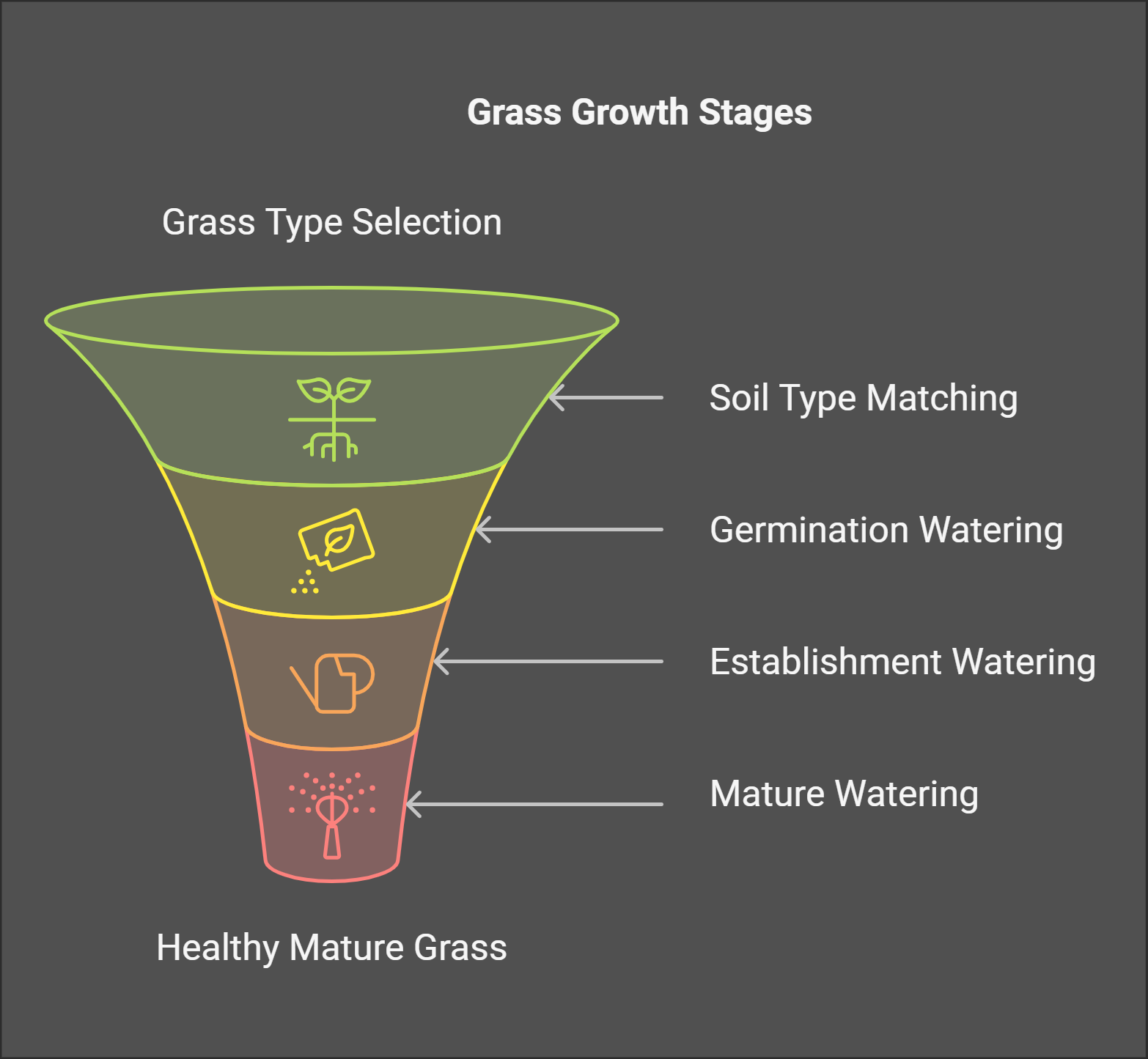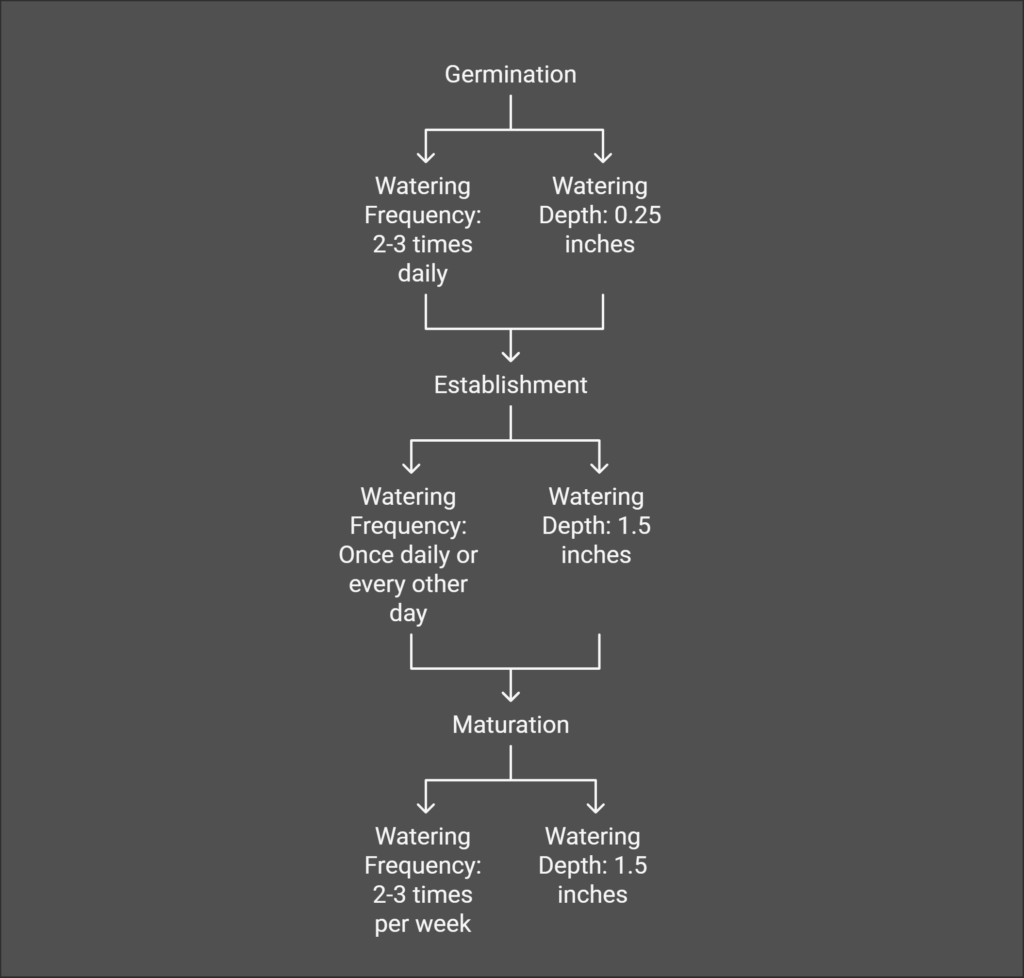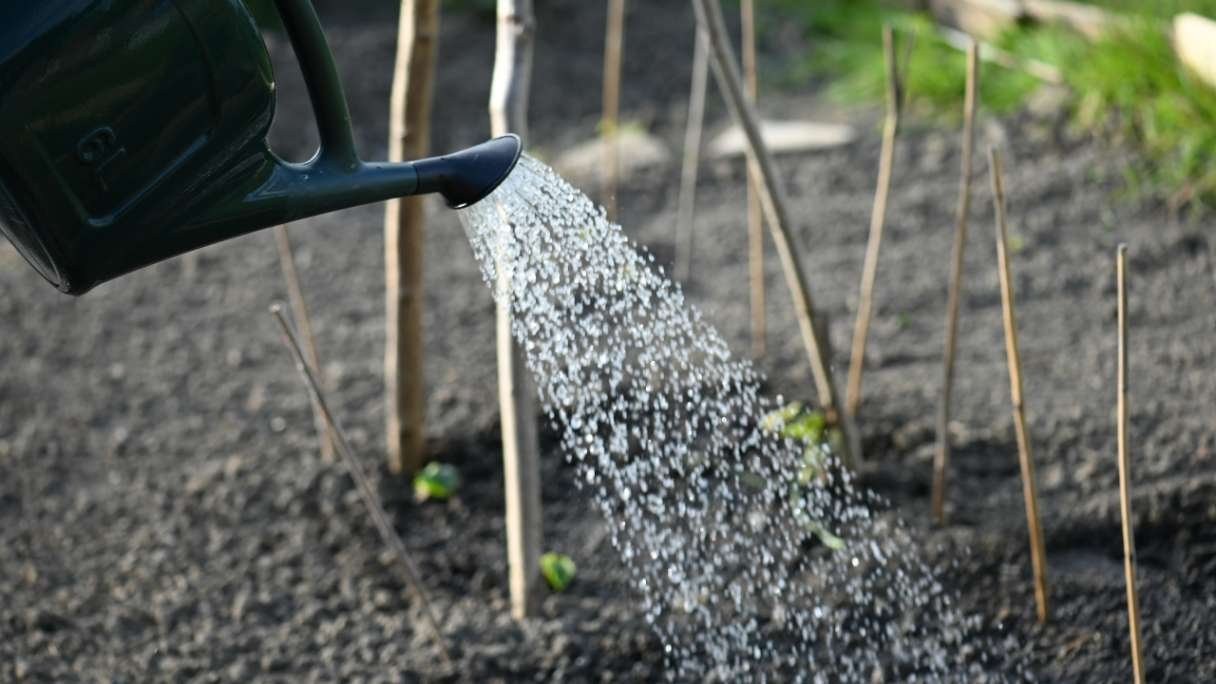Planting new grass seeds can be one of the most exciting steps in creating a beautiful green lawn. But there’s a big challenge that many homeowners face: how to water the seeds properly. Did you know that watering mistakes are one of the biggest reasons grass seeds fail? If you give them too much water, the seeds can drown. They can dry out and never grow if you don’t water them enough.
Watering new grass seed isn’t as simple as turning on a sprinkler. It’s a mix of understanding your lawn’s needs, the weather, and how grass grows. Whether planting grass for the first time or trying again after a failed attempt, this guide will teach you how to care for your seeds like a pro.
With over 15 years of experience in lawn care, I’ve helped countless homeowners grow thick, green lawns. I’ll share the most valuable tips to ensure your new grass seed grows successfully. Let’s get started!
How to Water New Grass Seed the Right Way

Understanding How Grass Seeds Grow
Before you start watering, it’s essential to understand the three main stages of grass seed growth:
- Germination: This is when the seeds start to sprout. It usually takes 7 to 21 days, depending on the type of grass. During this stage, the seeds need to stay moist all the time.
- Establishment: After the seeds sprout, the young grass plants need water to grow roots. They still need frequent watering, but you can start giving them more water at a time.
- Maturation: Once the grass has grown strong roots, it doesn’t need as much water. You can switch to a more typical lawn watering schedule.
Knowing these stages helps determine how often and how much to water. For example:
- During germination, the top layer of soil needs to stay moist.
- During establishment, you’re focusing on helping the roots grow deeper.
How Often Should You Water?
The number of times you water depends on your soil and the weather. Here’s a simple guide:
- Germination Stage: Water lightly 2 to 3 times a day. Keep the soil moist, but don’t let puddles form.
- Establishment Stage: Water once a day or every other day. Make sure the water soaks 1 to 2 inches deep into the soil.
- Maturation Stage: Water sincerely 2 to 3 times a week.
Tip:
Water in the morning. This helps the grass absorb water before the sun dries it out. Avoid watering in the evening, as wet grass overnight can lead to fungus.
How Much Water Do Grass Seeds Need?
Seeds need enough water to grow, but not so much that they drown. Here’s a quick breakdown:
- Germination Stage: Spray the soil gently to keep it damp. Avoid heavy watering, which can wash the seeds away.
- Establishment Stage: Water about ¼ to ½ inch each time.
- Maturation Stage: Your lawn will need 1 to 1.5 inches of water per week, spread out over several watering sessions.
Important:
Use a soil moisture meter to check if the soil is wet enough. The top 1 to 2 inches should feel damp during germination.

Factors That Change Watering Needs
Every lawn is different. Here are some things that affect how much and how often you need to water:
- Soil Type: Sandy soil dries out faster and needs more frequent watering. Clay soil holds water longer and requires less frequent watering.
- Weather: Hot, dry, or windy weather can quickly dry the soil. On cooler or rainy days, you might not need to water as much.
- Grass Type: Some grass types, like Kentucky Bluegrass, need more water. Others, like Bermuda grass, are more drought-tolerant.
Common Watering Mistakes and How to Avoid Them
Overwatering
Giving your seeds too much water can suffocate them and cause diseases like mold or fungus.
How to Avoid It: Check the soil. If it feels very wet or you see puddles, stop watering. The soil only needs to feel damp, not soggy.
Underwatering
If the seeds dry out, they won’t grow.
How to Avoid It: Stick to a consistent watering schedule, especially during germination. Check the soil regularly to make sure it’s moist.
Using the Wrong Sprinkler
Some sprinklers spray too hard, washing away seeds, while others don’t cover the area evenly.
How to Avoid It: Use a sprinkler with a gentle spray setting. Make sure the water reaches all parts of your lawn evenly.
Skipping Days
If you miss a day or two, the seeds might dry out and stop growing.
How to Avoid It: Set reminders or use an automatic sprinkler system to stay on track.
FAQs About Watering Grass Seed
Q. Can You Overwater New Grass Seed?
Yes, overwatering can drown the seeds and cause fungal diseases. The soil should feel damp, not soaked.
Q. When Is the Best Time of Day to Water?
Morning is the best time because it’s cooler and less windy. This helps water soak into the soil without evaporating too quickly.
Q. How Long Should I Water?
It depends on your sprinkler. For germination, water until the top ¼ inch of soil is damp. For mature lawns, aim for 1 to 1.5 inches per week.
Q. Do I Need to Water After It Rains?
Light rain might not be enough. Check the soil’s surface. If it feels dry, water lightly to keep it moist.
Q. How Can I Tell If I’m Watering Correctly?
Look at the soil. It should look damp but not muddy. A soil moisture meter can also help you check if the soil has enough water.
Conclusion
Watering new grass seeds correctly is the first step to growing a healthy, green lawn. By understanding the growth stages, adapting to your lawn’s needs, and avoiding common mistakes, you can help your grass thrive. Remember, consistency is the key to success!
Are you ready to turn your yard into a beautiful lawn? Check out our other lawn care guides for more tips. Don’t forget to subscribe to our newsletter for expert advice in your inbox. Your dream lawn is just a few watering sessions away!






